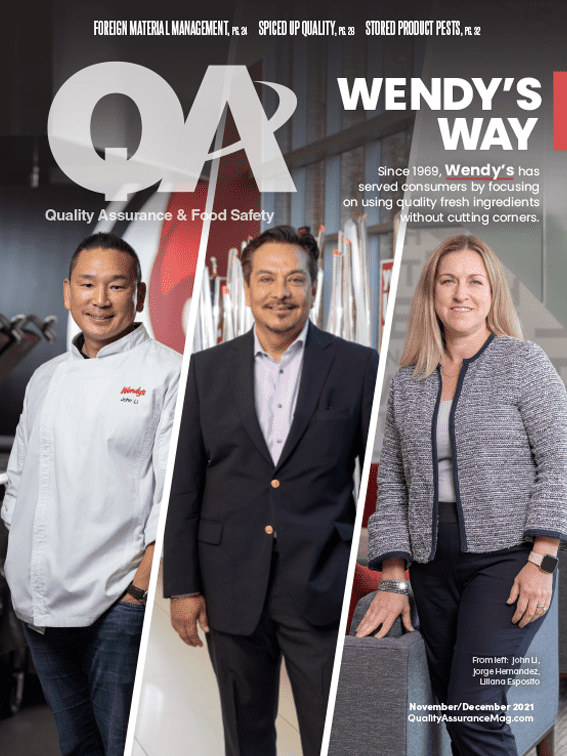
As the world almost came to a halt during the COVID-19 pandemic, organized crime gangs involved in food fraud were quite busy. Signs of their uninterrupted activity show up in the results of OPSON X, an annual operation against illicit food and drink products jointly coordinated by INTERPOL and Europol.
In the seven months between December 2020 and June 2021, law enforcement agencies in 72 countries confiscated 15,451 metric tons of illegal products, with an estimated value of 53.8 million euros ($62.4 million). Compared to OPSON IX, the increase was 28% and 16%, respectively.
One of the recent developments that emerged during the operation, Europol’s Executive Director Catherine De Bolle explained, was the infiltration of low-quality products in the supply chain, “an evolution possibly related to the repercussions of the COVID-19 pandemic.”
For Arun Chauhan, director of Tenet Compliance & Litigation, a law firm based in the United Kingdom, specializing in fraud and financial crime, the link between safety restrictions and a potential increase of food fraud cases is more than a possibility.
“What the pandemic brought around is almost the perfect storm,” he said. “With the lockdowns, we’ve had to move away from in-person checks to a paper-based system, which created more opportunities for counterfeiting goods or documents at border control.”
Another element, explained Chauhan, were the disruptions to the supply chain.
“At the beginning, as shop shelves were being quickly swept up, there was pressure from consumers for quicker supply, and organized crime could fill this gap with illicit goods,” he said.
Lack of seasonal farm workers due to mobility restrictions made this gap even worse. Finally, the prolonged restaurant closures “created a build-up of unused supply,” explained Chauhan. “Some substandard goods that were past the expiration date, grains for example, were likely either acquired by criminal gangs or sold as fresh.”
All these factors created the best conditions for two of the most common types of food fraud: adulteration and misrepresentation of origin.
The key concept to understand the link between the health emergency and food fraud is pressure.
15,451: Amount in metric tons of illegal products confiscated by law enforcement agencies between December 2020 and June 2021.
“People don’t commit fraud because of greed, but because they’re under pressure,” said Chauhan. “When business owners are trying to make enough margins to feed their families, they may act in a way which is not consistent with their moral compass.”
Those indeed motivated by greed are organized crime gangs. For them, pressure means more opportunities.
“Organized crime gangs know that there are fewer checks and that people’s guard is down because they’re worried,” said Chauhan. “They take advantage of loopholes quickly, while legislative bodies take a long time to close them down.”
One of the loopholes created by the pandemic is online food shopping, which has become a new channel for illicit products and cybercrime.
“Criminals know how to speak the language of the sector,” said Chauhan. “In some cases, they were able to impersonate a legitimate counterparty of a supply transaction to divert payment on an invoice.”
Another example is unlicensed distilleries and the infiltration of substandard alcohol products. In the OPSON X operation, illicit alcoholic drinks were the most seized goods — they ranked second in OPSON IX — and the most commonly seized counterfeited product. The OPSON IX report defines them as “one of the most significant threats to the life and health of consumers worldwide, state income and IPR.”
Moving forward, Chauhan hopes to see more awareness in the industry about the risks that food fraud poses to consumers’ health.
“People look at food safety and food fraud as two separate issues, but they’re so intertwined,” he said. “Without a more mature approach to avoid commercial fraud, you are increasing food safety risk.”
Ultimately, the fight against food fraud should be a collective effort between businesses and consumers.
“Hopefully, post pandemic, we’ll see more businesses taking ownership of this issue and improve their counter-fraud activities, not just to avoid fines, but because it’s a problem for the industry,” Chauhan said. “Consumers need to be educated on how to become eyes and ears for the sector. Law enforcement agencies rely on intelligence, and there’s no better intelligence than consumers. They are the very market we’re trying to protect — but can also be the market that protects us.”

Explore the November December 2021 Issue
Check out more from this issue and find your next story to read.
Latest from Quality Assurance & Food Safety
- Scentian Bio Wins Top Prize at IFT FIRST Startup Pitch Competition
- Evigence Debuts FreshSense to Change How Food Industry Measures Freshness
- Acme Releases Automated Scraper Strainer
- Mitzi Baum to Step Down as CEO of Stop Foodborne Illness
- USDA ARS Scientists Develop Pectin That Gels with Low-Sugar Products
- GS1 US Celebrates 50-Year Barcode 'Scanniversary' and Heralds Next-Generation Barcode to Support Modern Commerce
- New Florida Extension Agent Will Teach Stakeholders About Food Safety
- Athletic Brewing Company Announces $50 Million Equity Financing Round Led by General Atlantic





